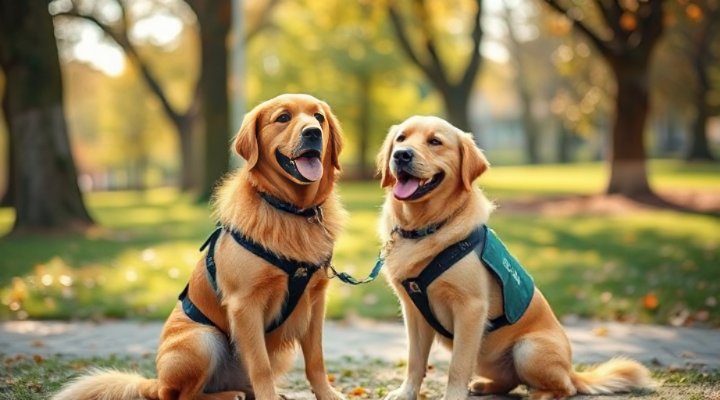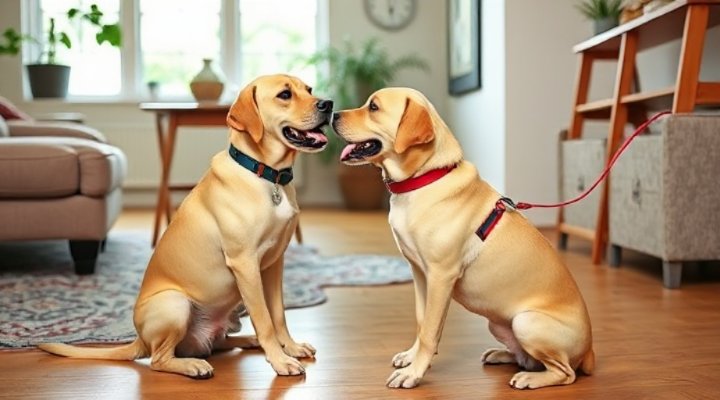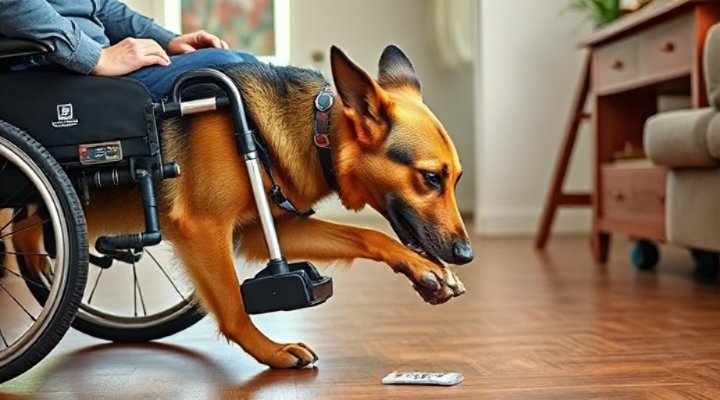Training a service dog is both rewarding and challenging. These remarkable animals provide life-changing assistance to people with disabilities, but reaching that level of skill requires careful training. The best service dog training techniques combine patience, consistency, and positive reinforcement to create a strong working partnership.

Foundations of Service Dog Training
Before diving into specialized tasks, every service dog must master basic obedience. This foundation includes commands like sit, stay, come, heel, and down. According to the ADA guidelines, a service dog must be under control at all times.
I remember training my first service dog, Max, a golden retriever. We spent weeks just on ‘sit-stay’ before moving to more complex commands. The key is to break each skill into small, manageable steps.

Positive Reinforcement Techniques
The most effective service dog training methods use positive reinforcement. This means rewarding desired behaviors with treats, praise, or play. For example, when teaching ‘heel,’ reward your dog the moment they’re in the correct position.
Our article on best dog training treats can help you choose the right rewards. Remember, timing is crucial – the reward must come immediately after the correct behavior.
Advanced Service Dog Training Methods
Once basic obedience is solid, you can begin task training. This varies depending on the handler’s needs but might include:
- Retrieving items
- Alerting to sounds
- Providing balance support
- Medical response tasks

Task training should be approached systematically. Start with simple versions of the task and gradually increase difficulty. For instance, when teaching item retrieval, begin with large, easy-to-grab objects before moving to smaller items.
Public Access Training
A crucial but often overlooked aspect is public access training. Service dogs must remain calm and focused in various environments. Our guide on dog training classes can help you find professional support for this challenging phase.

Start with quiet locations and gradually expose your dog to busier environments. Always watch for signs of stress and be ready to take a step back if needed.
Maintaining Your Service Dog’s Skills
Training doesn’t stop once basic skills are learned. Regular practice sessions keep skills sharp. The AKC recommends short, frequent training sessions rather than long, infrequent ones.
I’ve found that incorporating training into daily routines helps maintain skills naturally. For example, practicing ‘stay’ while preparing meals or ‘heel’ during regular walks.

Troubleshooting Common Challenges
Even with the best service dog training techniques, challenges arise. Common issues include distraction, fatigue, and generalization difficulties. If you hit a plateau, consider:
- Breaking skills into smaller steps
- Changing reinforcement schedules
- Seeking professional guidance
Remember, every dog learns at their own pace. What works for one service dog might need adjustment for another.
Building the Handler-Dog Bond
The most important element in service dog training isn’t any specific technique – it’s the bond between handler and dog. This relationship forms the foundation for all successful service dog work.
Spend quality time together beyond training sessions. Play, relax, and simply enjoy each other’s company. This emotional connection will enhance your working relationship.
For more information on building this bond, check out our article on dog training for beginners.
Keywords Summary
service dog training, dog obedience training, advanced dog training, service dog tasks, dog training tips, positive reinforcement training, public access training, service dog handler bond
